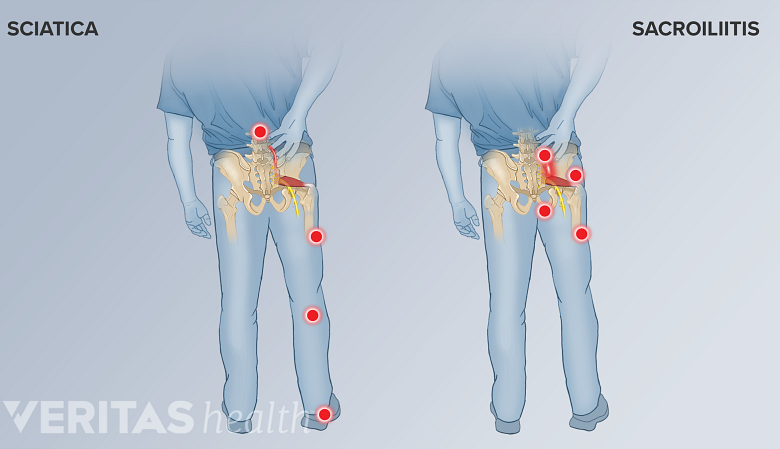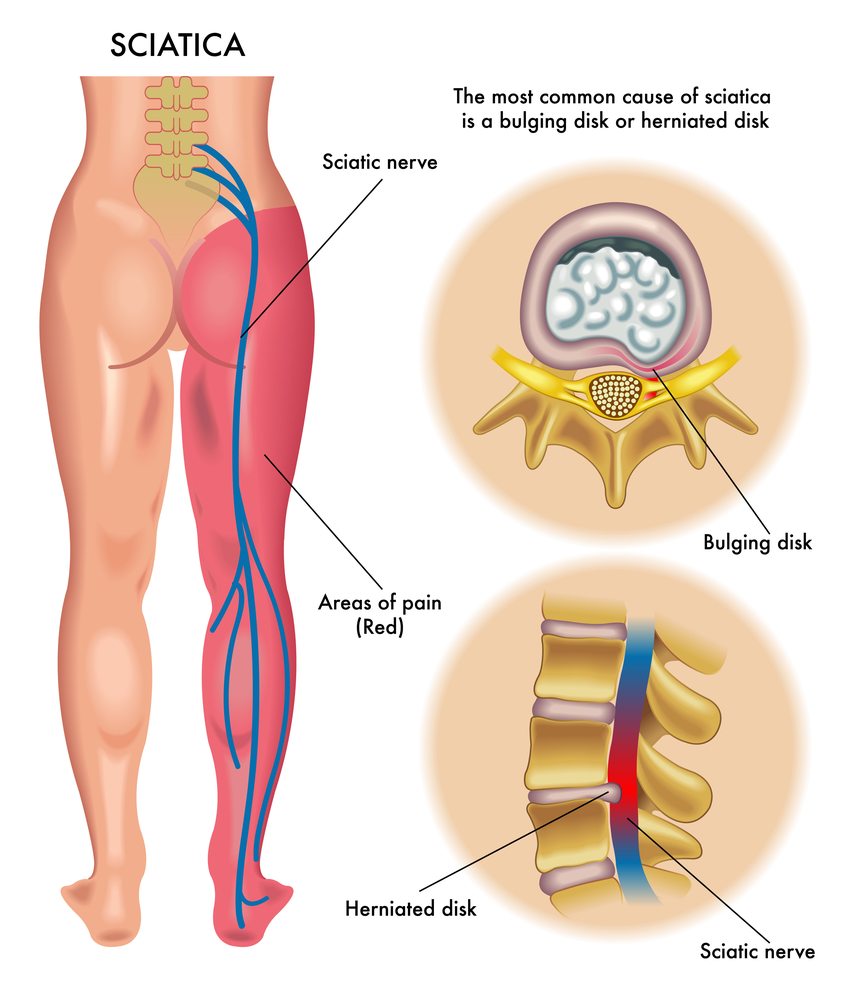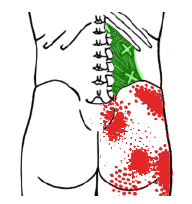Back
Sciatica or Sacroiliac Joint (SIJ) Pain?
By Shannon Strauch, PTA, STMT-1 on 5/21/2024

Sciatica and sacroiliac joint (SIJ) pain are two distinct conditions that affect the lower back and legs, but they have different causes, symptoms, and treatment approaches. Here’s a detailed comparison:
Sciatica
Cause:
Sciatica is caused by compression or irritation of the sciatic nerve, which can occur due to herniated discs, spinal stenosis, piriformis syndrome, or other conditions that affect the lower spine.

Symptoms:
Pain that radiates from the lower back down through the buttock and into the leg, typically on one side of the body.
The pain may extend as far as the foot or toes.
Symptoms can include sharp, burning, or shooting pain, as well as numbness, tingling, or muscle weakness in the affected leg.
Pain can worsen with prolonged sitting, coughing, or sneezing.
Diagnosis:
Physical examination focusing on leg lifts and spine movement.
Imaging tests like MRI or CT scans to identify nerve compression or spinal abnormalities.
Treatment:
Physical therapy to strengthen and stretch the muscles supporting the lower back.
Medications such as anti-inflammatories, muscle relaxants, or nerve pain medications.
Epidural steroid injections.
In severe cases, surgery may be considered to relieve nerve compression.
Sacroiliac Joint (SIJ) Pain
Cause:
SIJ pain arises from dysfunction or inflammation of the sacroiliac joints, which connect the sacrum (the base of the spine) to the pelvis.
Causes can include arthritis, trauma, pregnancy (due to hormonal changes and increased load on the pelvis), or biomechanical issues such as leg length discrepancy.


Symptoms:
Localized pain in the lower back or buttock, often on one side, which may radiate to the groin or thigh.
Pain is typically aggravated by standing up from a seated position, climbing stairs, or standing for long periods.
Stiffness or a feeling of instability in the pelvis.
Pain is usually not as sharp or shooting as sciatica and doesn’t typically extend below the knee.
Diagnosis:
Physical examination with specific tests like the FABER (flexion, abduction, and external rotation) test.
Diagnostic injections into the SI joint to confirm the source of pain.
Imaging tests like X-rays, MRI, or CT scans to rule out other conditions.
Treatment:
Physical therapy focusing on strengthening and stabilizing the muscles around the SI joint.
Medications such as anti-inflammatories or pain relievers.
SI joint injections with steroids or anesthetics to reduce inflammation and pain.
In severe cases, surgical options like SI joint fusion may be considered.
Summary
While both sciatica and SIJ pain can cause lower back and leg pain, sciatica is specifically related to sciatic nerve compression and presents with more pronounced nerve-related symptoms (radiating pain, numbness, tingling). SIJ pain, on the other hand, is more localized to the lower back and buttock region and is related to dysfunction or inflammation of the sacroiliac joint. Accurate diagnosis and targeted treatment are crucial for effective management of both conditions. Looking to optimize your well being with pelvic floor physical therapy? Reach out to us at Pelvic Health Center in Madison, NJ to set up an evaluation and treatment! Feel free to call us at 908-443-9880 or email us at receptionmadison@pelvichealthnj.com.
Read More:
How Chronic Pelvic Congestion in Men Contributes to Prostatitis By Shannon Strauch, PTA, STMT-1 on 12/11/2024 How lymphatic issues can cause symptoms of prostatitis Prostatitis and Tight Pelvic Floor Muscles: A Comprehensive Guide By Shannon Strauch, PTA, STMT-1 on 12/10/2024 How a tight pelvic floor can be the reason for prostatitis symptoms
Are you ready to live pain free?
Request An Appointment